Fish River Canyon is one of the most beautiful stops if you visit Namibia. In fact, it is the second most visited tourist attraction in the country. However, to get there you will need to invest time as the canyon is located in the southern part of the country, in the middle of a desert and isolated territory.
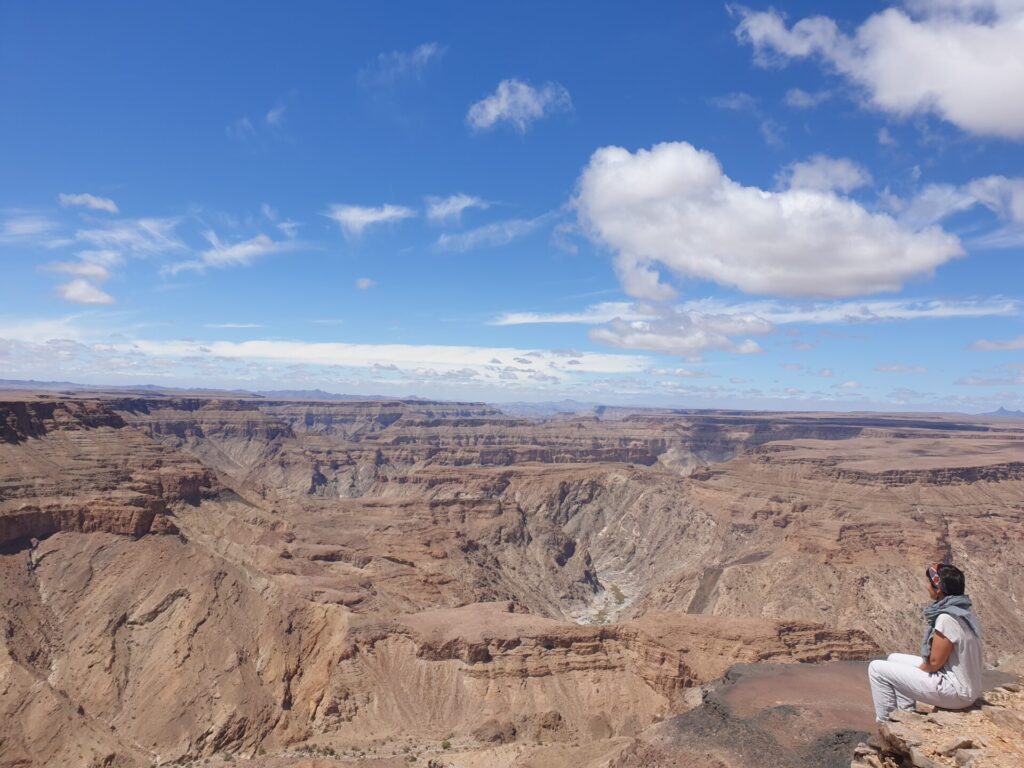
This canyon, considered the second longest on the planet behind the Colorado Canyon (USA), is about 160 kilometers long, with a depth of over 500 meters in some places. If you want, you can cross it from the Fish River Canyon hiking trail, a route where you will walk for 5 days the more than 80 kilometers inside the canyon. However, as we did, you can also enjoy the canyon if you visit one of its main viewpoints, which are located in the northern part, near the Hobas area.
The Fish River is the longest inland river in Namibia. It flows between dry landscapes and stony plateaus, with a very small flow that is usually flooded in late summer when the few rains of the year fall in this area. At the end of this river and the Fish River Canyon, we can find some hot springs in the town of Ais-Ais located within the Ais-Ais / Richtersveld Transfrontier Park which are also worth a visit if you are in the area.
The second longest canyon in the world was formed about 650 million years ago. At the beginning, a first erosion formed during a plate movement allowed the presence of the Fish River in this lower part of the earth. Later, during the Dyka Glaciation during the Karoo Ice Age, this area deepened even further. Finally, about 60 million years ago, when the lands of present-day America and Africa separated, the Fish River grew and allowed the already formed canyon to erode even further until hard gneiss was found in the lower part of the canyon, forming the current snake-shaped path characteristic of this canyon. Today, the deepest point of the canyon is 549 meters deep.
The landscape that currently forms this canyon makes it a unique and remote place in the geography of Namibia. A must-see if you have the necessary days to get there, so you can step on one of the longest formations on the planet, and observe the passage of time between the rocks and the characteristic terrain of the Fish River Canyon.
How to get there?
Fish River Canyon is located in the southernmost part of the country. To get there, you will have to walk drive a lot of kilometers (it is about 650 km from Windhoek), but if you have time, we advise you to go there to enjoy a unique landscape in Namibia.
To reach the main viewpoints of the canyon, you will need to reach the Hobas Campsite, a campsite managed by Namibia Wildlife Resorts (NWR), where you will have to process the entrance payments, and from there drive 12 kilometers to the main viewpoint, from where you can walk (or drive) to the other viewpoints around.
If you come from the north and want to get to Hobas, you have several options. For example, if you come from Windhoek and reach Keetmanshoop on the B1, then take the B4 towards Lüderitz and after about 35 km turn left to take the C12. This gravel road will take you south for about 80 kilometers until you have to turn right to take the C37 and finally drive 30 kilometers until you find the Hobas Campsite turnoff.
If you are coming from the east (for example, Grunau), and you want to reach Hobas, you will have to take the C12 road for about 55 kilometers to the west and then take the C37 which will take you after 30 kilometers to the turnoff of Hobas Campsite.
If you are coming from the South African border, you will have to drive the B1 for about 115 kilometers until you find the junction for Ais-Ais on the C10. Then you will have to drive 50 kilometers and before taking the road that goes directly to Ais-Ais (which will be about 22 kilometers from this point), turn left to take the C37 heading north until After about 42 kilometers you will find the break to Hobas Campsite.
To go directly to Ais-Ais, if you come from the north, the best way is to follow the C37 (passing the Hobas Campsite turnoff), and after 42 km you will reach a turnoff where you will have to go to your right to get there, after 22 kilometers, in the hot springs. Therefore, from Hobas to Ais-Ais there is a distance of about 68 kilometers that you can do in about 1 hour.
Finally, if you want to get to the Fish River Canyon, here the road is completely different as the main junction to get to this accommodation is on the B4, on the road between Keetmanshoop and Lüderitz (if you want to know our experience in this coastal city, you can click here). You will find a well-signposted turnoff on your left to make your way to the accommodation on a lonely gravel road of about 105 kilometers in which you will take approximately 1.30-2 hours.
Permits and prices
Fish River Canyon is approximately 160 kilometers long, and if you want to visit it, you will have to pay a ticket from the various access points. In addition, if you want to do other activities such as the famous route through the canyon for 5 days you will have to buy a special permit, and book it to do the tour on specific dates.
Entry fee to visit Fish River Canyon from the main viewpoints just a few kilometers from Hobas Campsite is 150 NAD per person, plus 50 NAD per vehicle. You must register and make the payment (credit card payment can be made) from the campsite offices. If you want to go to the thermal waters of Ais-Ais, located south of the canyon, the entrance is 50 NAD per person, but the views are not as spectacular as you can see from the viewpoints of Hobas.
What to do in the Fish River Canyon?
If you have finally decided to visit Fish River Canyon, here are some of the activities we find most interesting to do during your stay there. These are:
– Enjoy the stunning views from the top of the canyon
In order to see the canyon in all its splendor, the best place is to access through the Hobas campsite from where, after formalizing the payments for your entrance, you will have to drive for 12 kilometers until you reach different viewpoints.
There, you can leave the car and enjoy the canyon right in front of you. We recommend that you go there early in the day and/or late in the afternoon to see how the colors vary and the landscape becomes more orange.
From the main viewpoint, you will find different paths that go to the left and take you to another perspective of the canyon; and another path that goes to the right and takes you to another point of view where you can take stunning photographs of the vastness of one of the largest canyons in the world.
You can spend as much time as you want, enjoying the tranquility and solitude of the place, the direct views of the Fish River Canyon and the beauty of the dry, desert environment around you. Please note that although there is a path that goes down to the canyon, it is forbidden to access it unless you have permission to do the Fish River hiking trail, a 4–5-day route through the canyon that we will explain you below.
– Walk the Fish River hiking trail, an 88-kilometer route in the middle of the canyon
This route, considered one of the most popular in the country by hiking lovers, is usually completed in a route of about 5 days. It starts from the viewpoints you will find when you enter from the Hobas campsite, where you will descend to reach the river and there you will follow the canyon until the southern part, in Ais-Ais.
Due to the weather conditions where you can find summers with very high temperatures that can reach 50 degrees, this route is only allowed during the winter months, so that, between 1st May and 15th September (think that we are in the southern hemisphere, and therefore the seasons are different from those we have in Europe). Apart from proving that you have the best physical condition to do this route, you will need to be self-sufficient during all these days and be over 12 years old. If you want to know more about this activity or book the permit, you can click on this link from Namibia Wildlife Resorts.
Below we leave you with a map to see the route of this whole trekking. Prices are not very expensive, but you will need time and fitness to carry everything you need. However, the reward will be very pleasing because you can enjoy the different colors of the canyon in the different time slots of the day, and be able to walk into the second longest canyon on the planet.
– Swim in some of Ais-Ais’s natural hot springs
In the southern part of the Fish River Canyon, you will find the town of Ais-Ais, the place where the Fish River Hiking Trail ends. The term Ais-Ais means burning water in the local Nama language; and there you will find a natural hot spring that form from the Fish River.
Therefore, you can visit the site located about 70 km from Hobas Campsite and relax with a bath in some of the natural pools you will find. It also has accommodation managed by the NWR itself, but the reviews on the Internet have not been very positive, necessitating a renovation of the accommodation that has been affected by the floods of the heavy rains of recent years.
– Relax in one of Fish River Canyon’s TOP accommodations
For us, this activity was an exception. Since we visited the Fish River Canyon around the time Esteve celebrated his birthday, Laia decided to give him a night’s stay at this accommodation located north of the canyon, but to get there you will have to drive for more than 3 hours as you have to make a big turn.
In this part, the territory of the canyon is privately managed and therefore not open to the public as is the case with the Hobas Campsite viewpoints. There, you can enjoy different excursions, bike routes and starry sky nights next to the second longest canyon on the planet.
The Fish River Lodge is one of the most exclusive establishments in the area, and for us it was a gift to be able to stay there and swim in the pool overlooking the canyon and sleep right on the top. One more activity to do during your stay here if your budget allows.
Where to sleep in the Fish River Canyon?
Fish River Canyon is located in a very remote place in Namibia. There are not a lot of accommodation options. Of these, we highlight:
– White House Guestfarm: This accommodation is located in Grunau, next to the B1 main road to Keetmanshoop. It is located one hour from Hobas Campsite and is a good alternative if you are looking for quiet accommodation close to a town where you will find restaurants and a petrol station such as Grunau. The White House Guestfarm is run by Dei, a very lovely woman, and there you can camp as well as sleep in some of the different cottages. For camping, for example, we paid 150 NAD per person, that is, about 8 €. If you want to know more information, you can click here or contact Dei on her Whatsapp which is +264 81 285 6484.
– Hobas Campsite: This campsite, managed by the NWR, is located a few kilometers from the main viewpoints of the canyon, and is therefore a very good strategic point to be there and enjoy the canyon during different hours of the day, such as the early in the morning or during sunset. Apart from 14 campsites, it also has 6 rooms for those traveling without a tent. For more information, click here.
– Ais-Ais Hotsprings: This accommodation, also managed by the NWR, is located south of the canyon. It is a complex where you will find the sulfuric hot water pools located in this area and which is the attraction for many people who want to relax and enjoy natural baths. That’s why during the holidays, it usually fully booked. In any case, if you are camping, you should have no problem because it has more than 100 places. It also has several double rooms and full chalets for a group stay. Lately, the reviews are not very good as the heavy rains that have fallen in the area have affected part of the infrastructure of the complex, but they are currently making the necessary renovations so may be a very good place to relax after a day on the Fish River Canyon. For more information, click here.
– Fish River Lodge: This is a luxury accommodation located north of Fish River Canyon. It is far away from the main viewpoints of Hobas and Ais-Ais, and more than 3 hours by car from this area, as you have to go all the way around. In any case, once you get there you will be completely in glory. It is a beautiful place located next to the canyon, with swimming pools with spectacular views, a very good restaurant and cabins with an ideal location. For us, it was a gift. The price is high (about 200-300 € per room) but the place is very exclusive and beautiful. For more information, click here.
Our route
DAY 1: This day was our first day in Namibia, after spending more than a month in South Africa. We crossed the border by Vioolsdrift, and from there we drove about 140 kilometers to the town of Grunau, the first large town on the B1. There, we had booked a campsite at the White House Guestfarm where we were able to meet Dei, a lovely woman who now took care of all the place after the sudden death of her husband a few months ago.
At the Whitehouse Guestfarm, we were able to plan the next days in Namibia and prepare for our second experience in this very special country. We had to go to bed early so we could enjoy one of the longest canyons on the planet the next day.
DAY 2: Early in the morning, we got up early to see the Fish River Canyon. Depending on the hours of sunshine, the color of the landscape changes as you can find different shades of ocher and orange on the rocks that vary from the strength of sunlight. After driving for an hour, we arrived at Hobas Campsite where we paid for the entry tickets and were able to speak Spanish with a girl from Namibia who had studied in Cuba, on the Isla de la Juventud. It was funny to hear the Cuban accent from the voice of an African girl from Namibia.
In a few minutes, we were in the main viewpoints of Fish River Canyon. We were completely alone and were able to enjoy the spectacular and unique views over this curious formation. The horizon was very dry, full of stones, and with a canyon meandering through the earth as if escaping from a predator. It was time to take out the camera and capture this moment with several photographs of the landscape, of us, of the car… A very beautiful place!
We then drove to a lookout point further north and from where the hiking trail that crosses the canyon for 5 days begins. If you do not have permission, it is strictly forbidden to go down, so we were satisfied with great panoramic views of the entire silhouette of the canyon. Finally, we drove to the southern part of the viewpoints from where we could enjoy different perspectives with the plants that also grew in the area.
Going with our 4×4 car was a great way to get to know this whole area, as the roads are dirt and rocky, and therefore allows you to go at a much faster speed than if we were going with a normal vehicle. So, after enjoying the Fish River Canyon, we continued on our way north of the canyon. Laia had a surprise for Esteve: one night at the Fish River Lodge, one of the most exclusive accommodations in the area. To get there, however, you had to travel more than 3 hours between wide and long gravel roads in the middle of a completely dry and isolated landscape.
After lunch in the middle of the road under one of the shadows of one of the few trees we found, we arrived in the afternoon at the Fish River Lodge, from where we were able to enjoy a swim in the pool next to the canyon and from this very beautiful place. An ideal moment to relax with great views and very attentive staff who took care of every detail. There, we met two couples who were also traveling around the country on their motorbikes.
We enjoyed a great dinner at the Lodge, and before we went to bed, we took the opportunity to take different pictures of the big starry sky before our eyes. After more than five months of travel, we were perfecting the technique of nocturnal photography! A great day around Fish River Canyon!

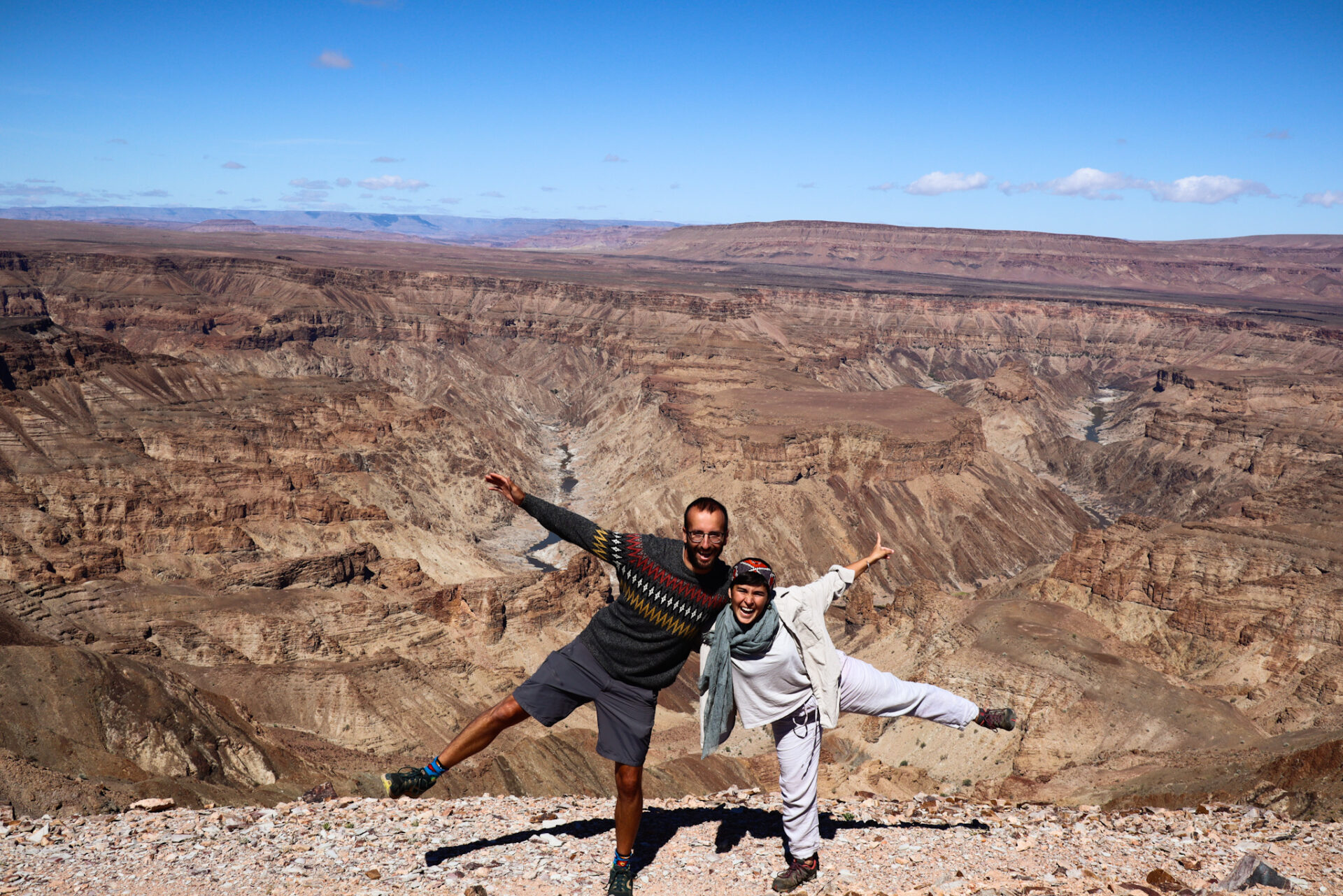
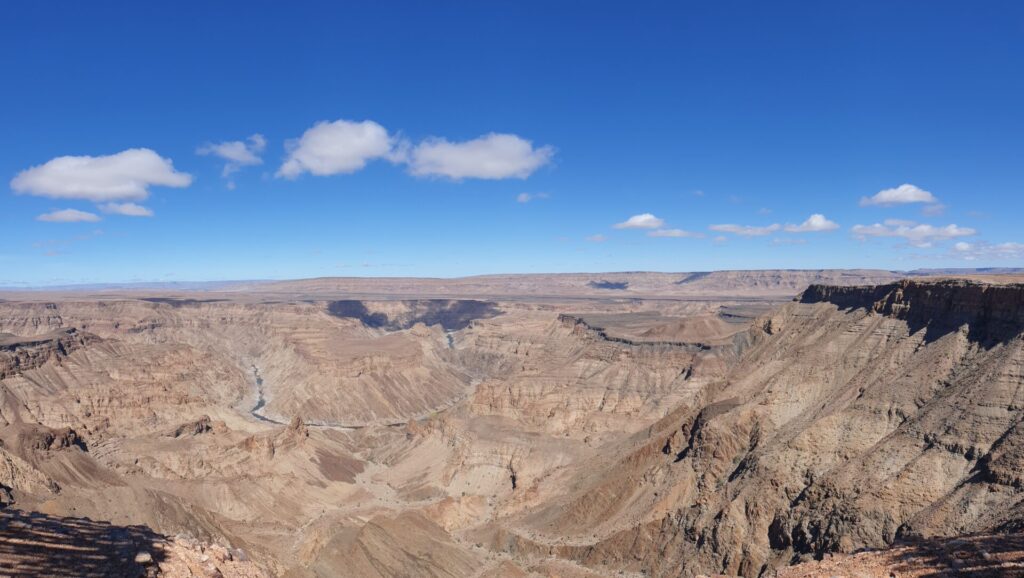

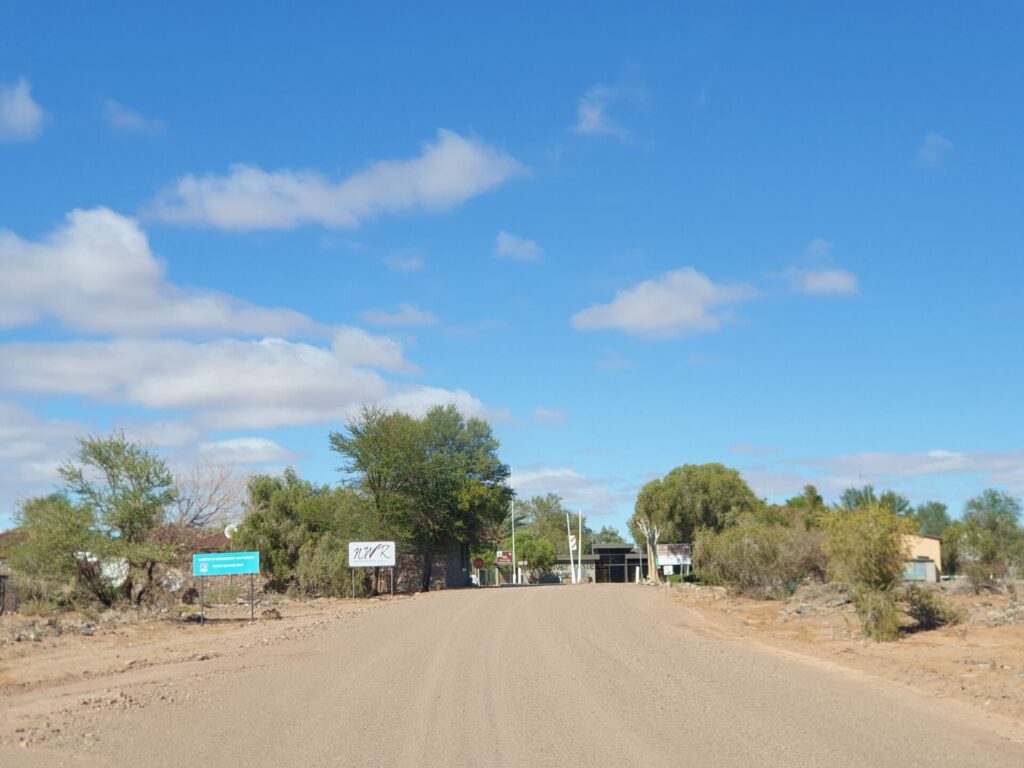
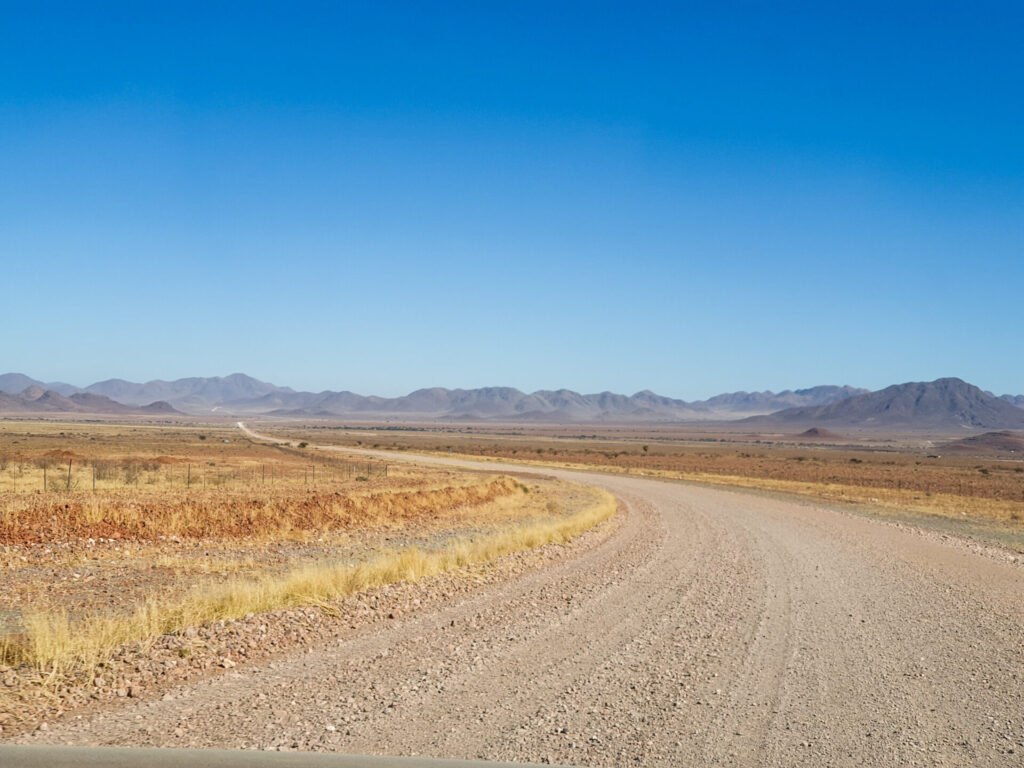
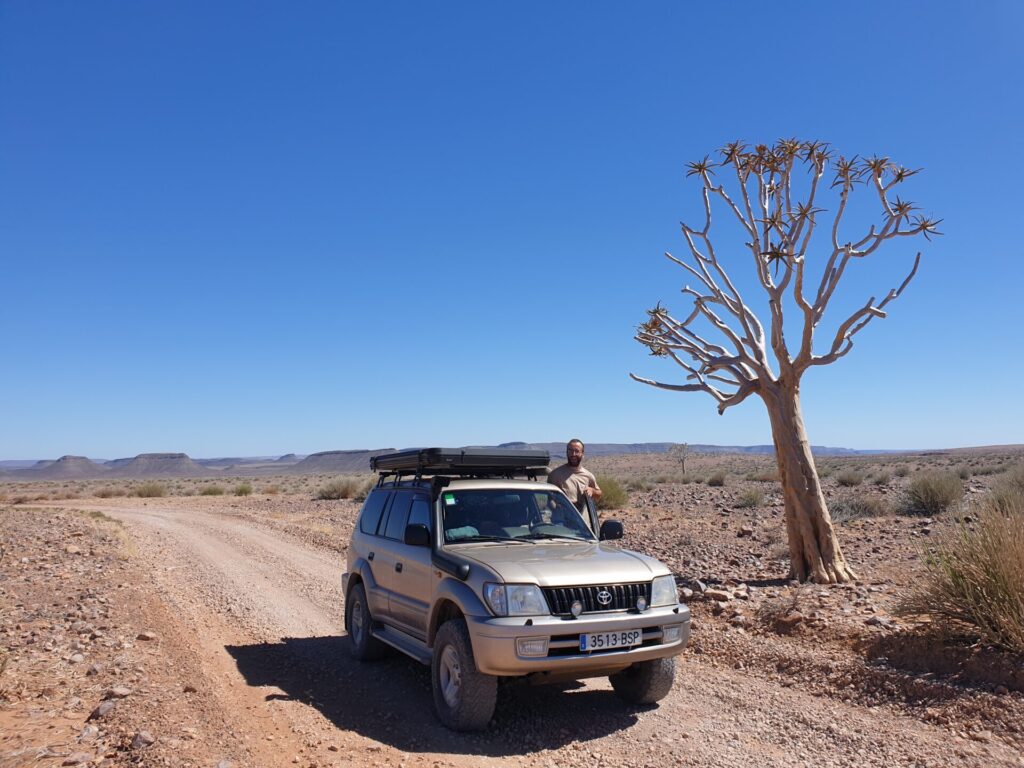

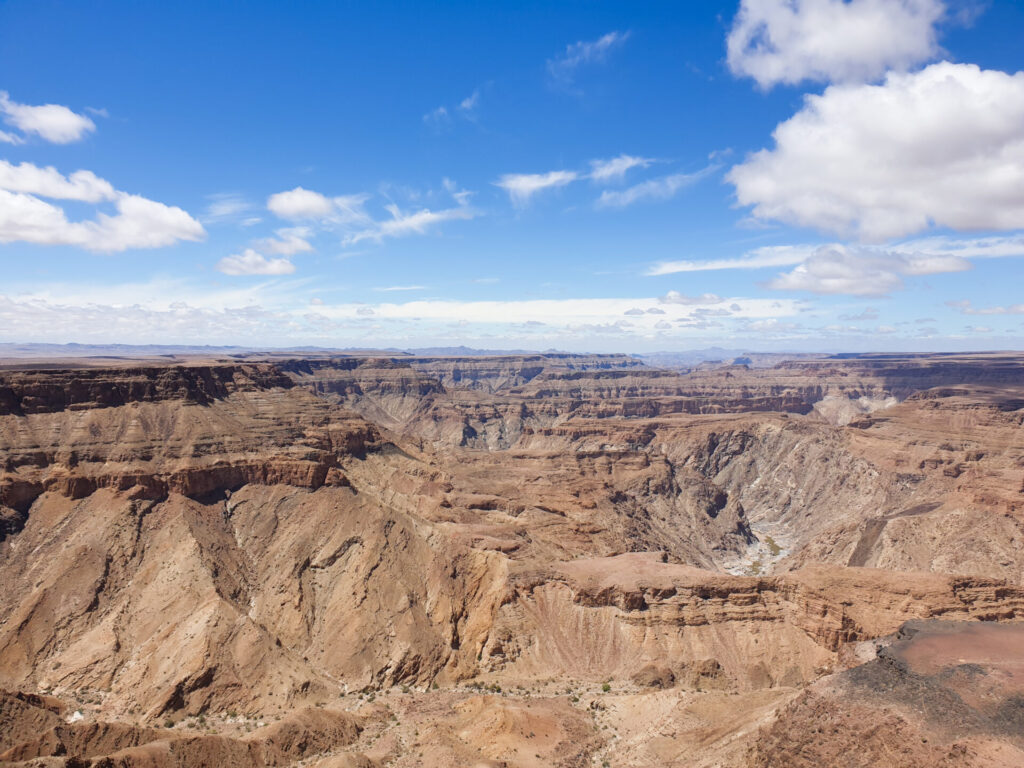
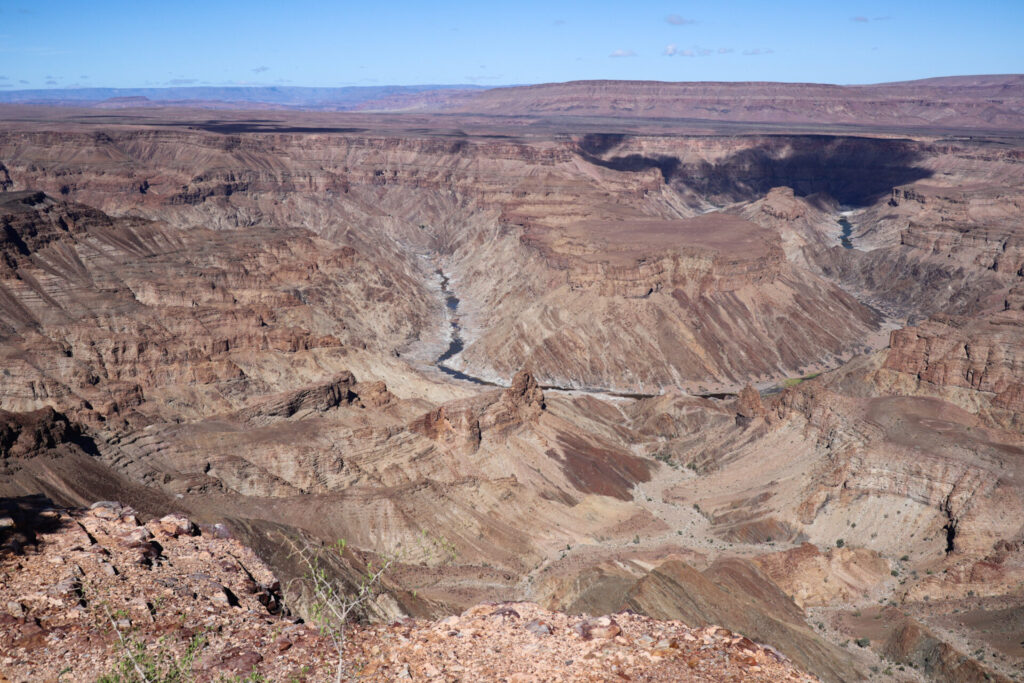
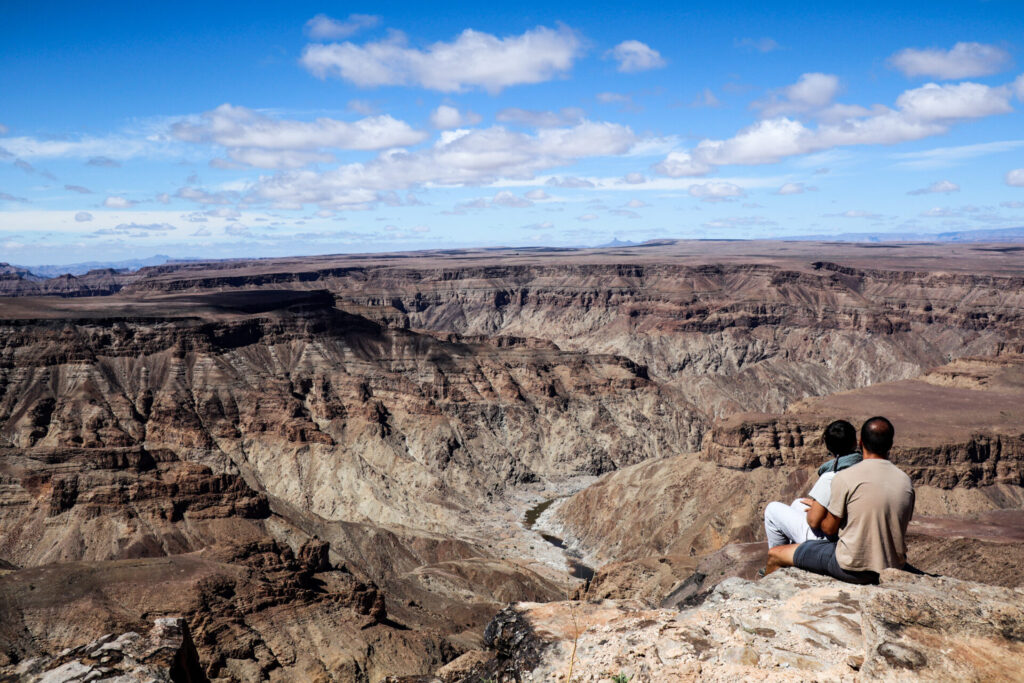
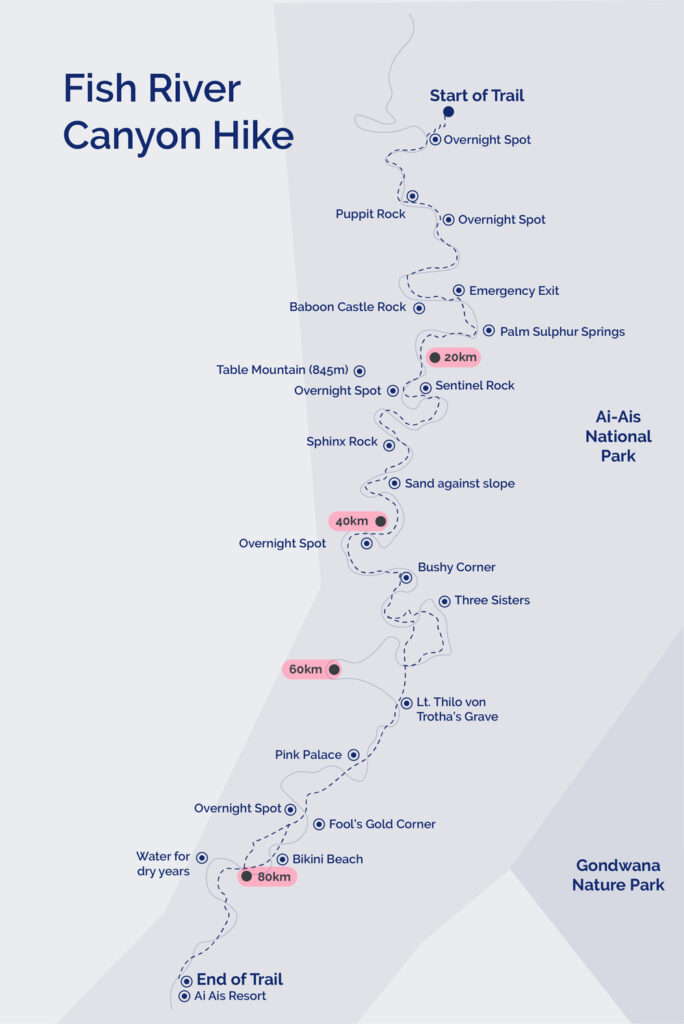
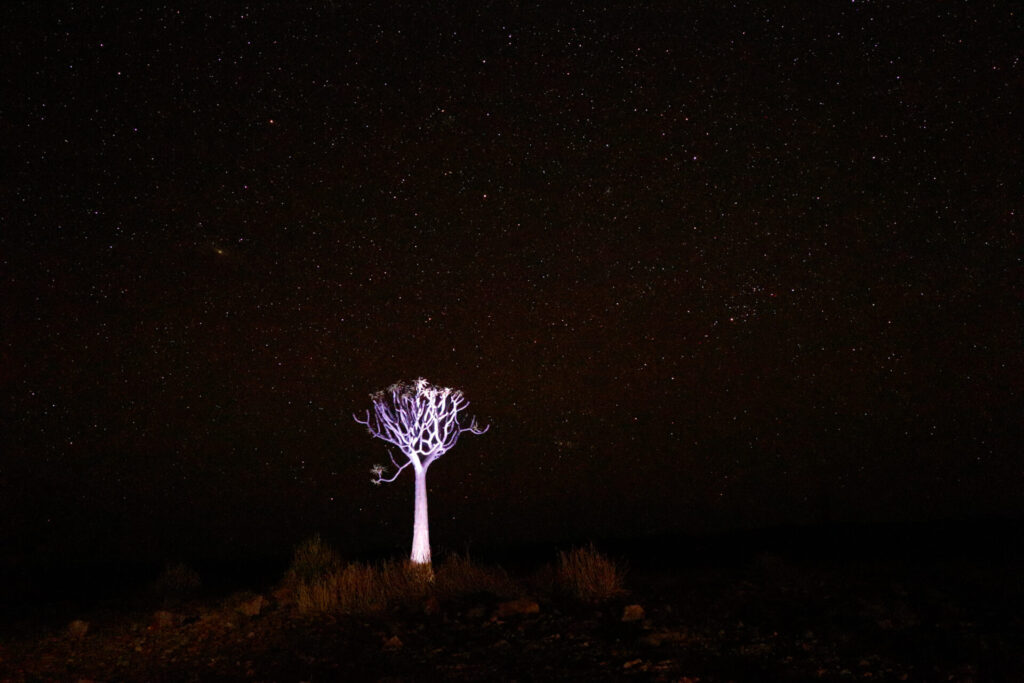

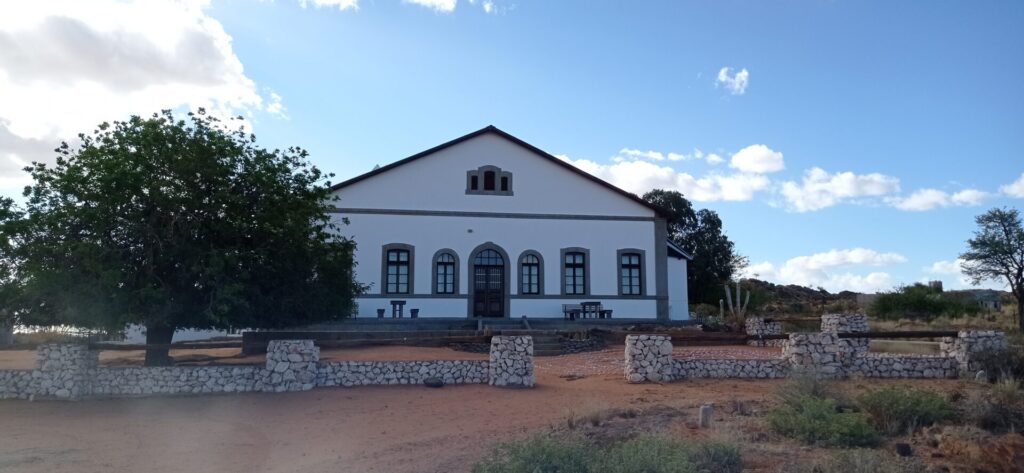

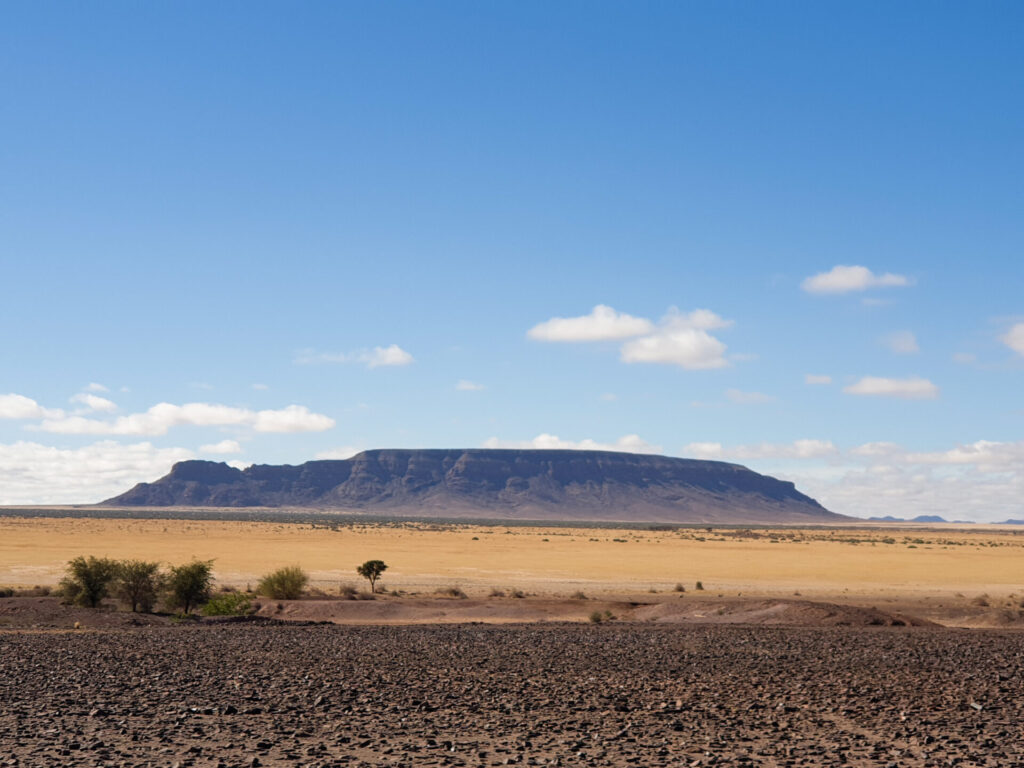

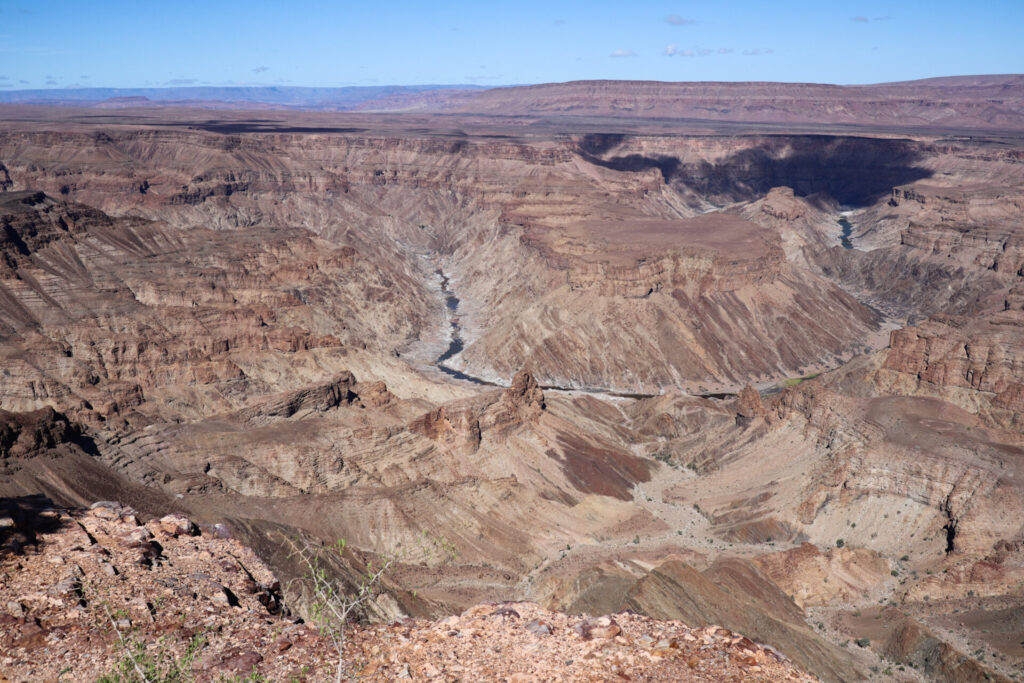
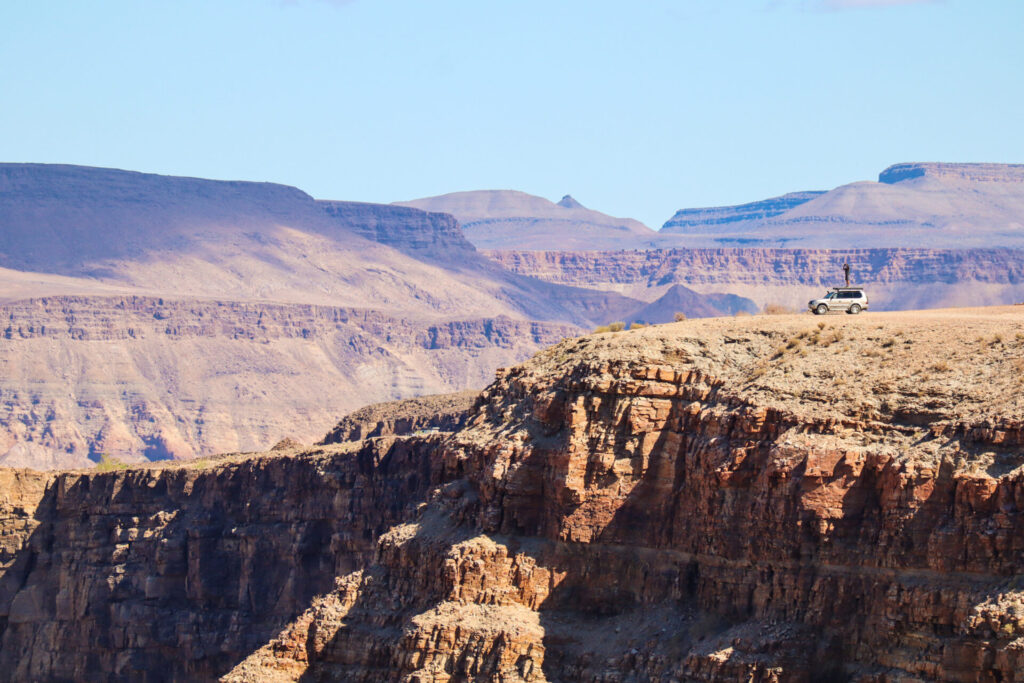

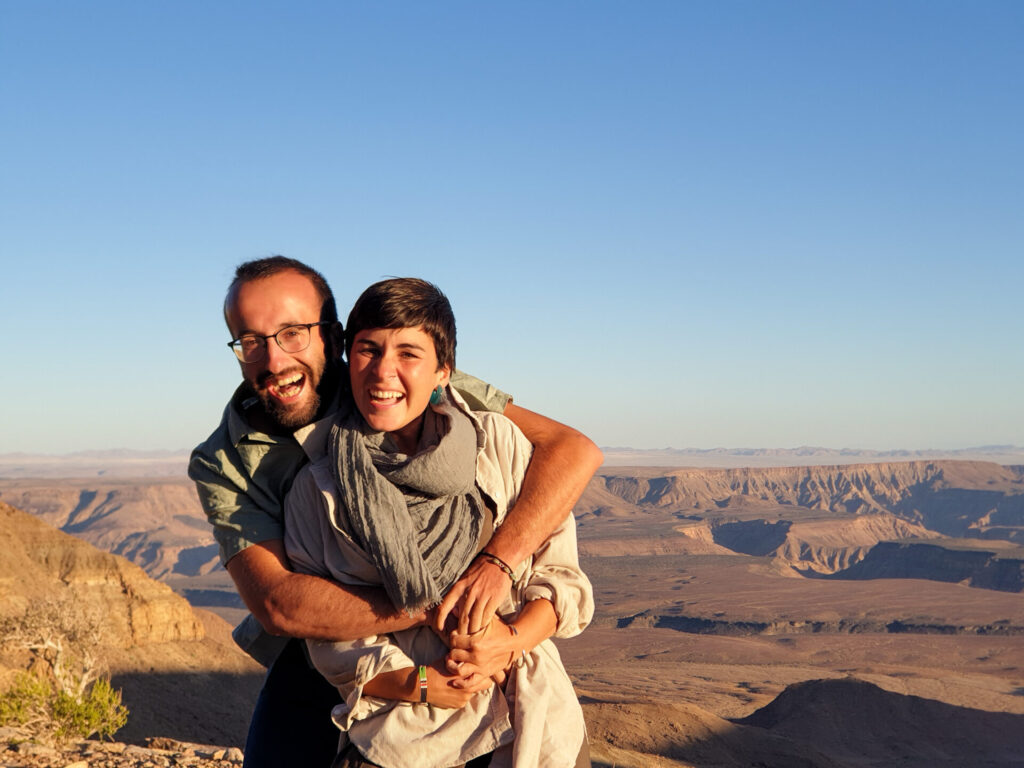
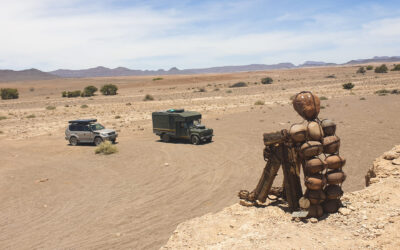
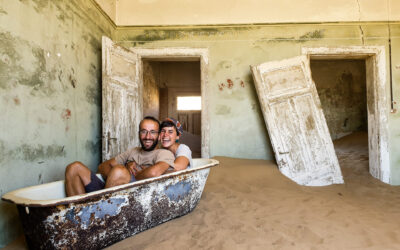
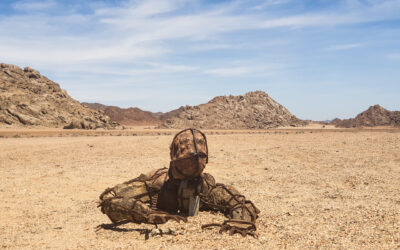
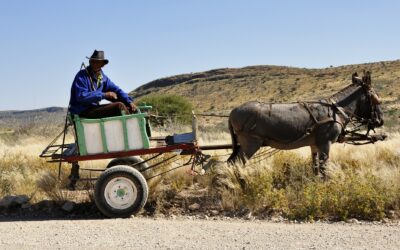
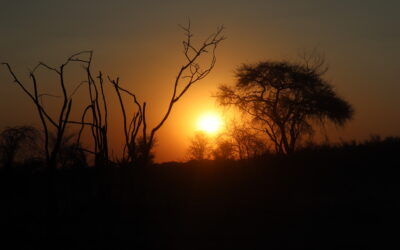
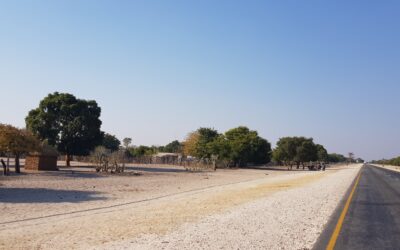

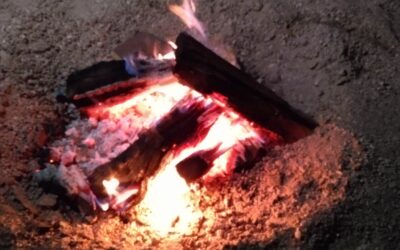
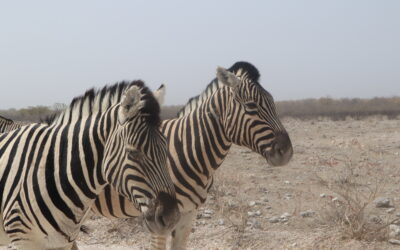
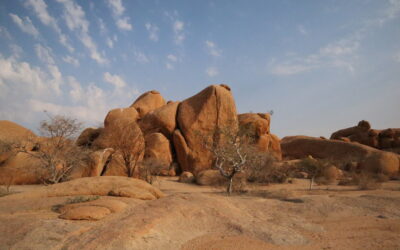
0 Comments